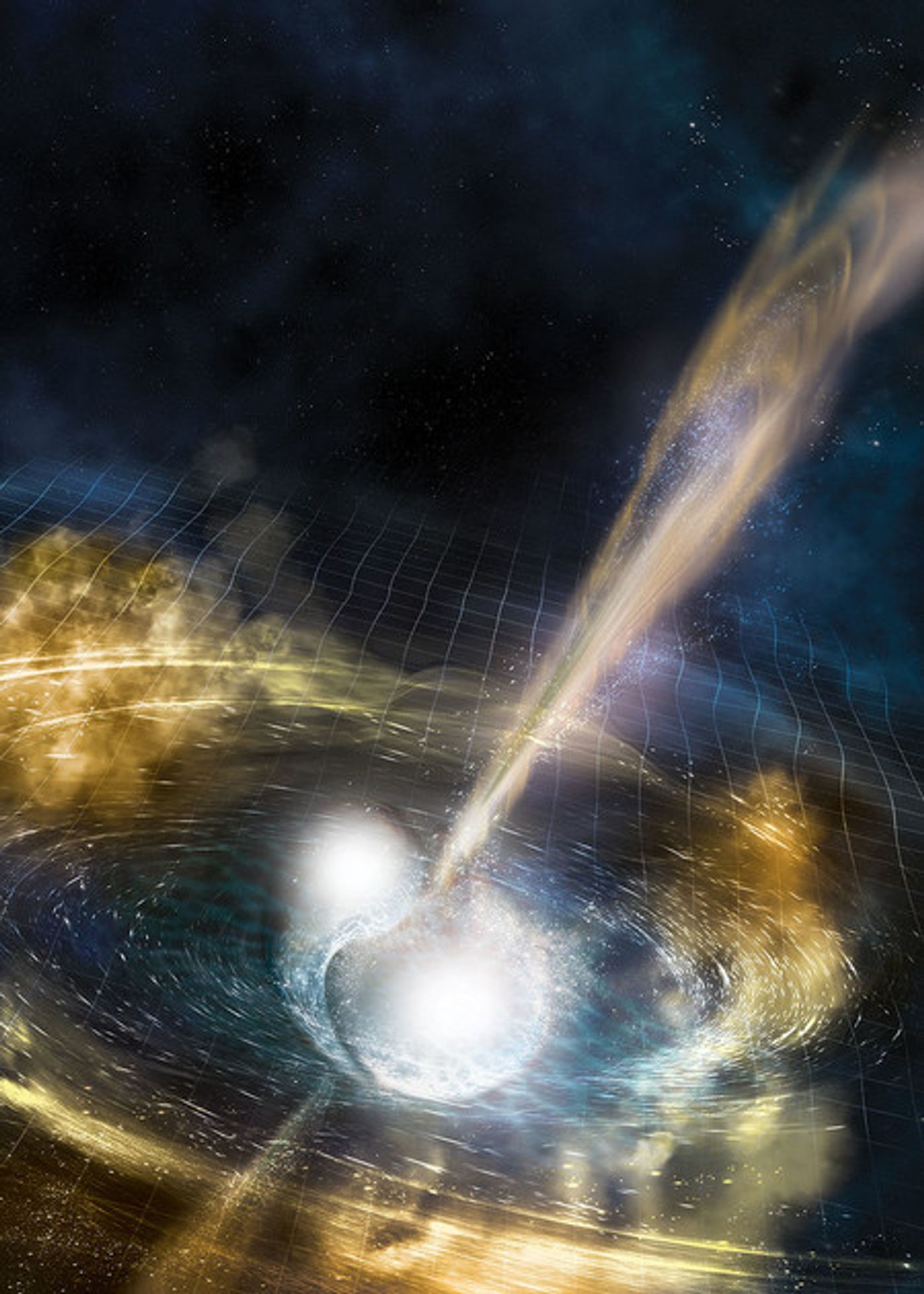Latest Gravitational Wave Detection Involved Two Neutron Stars
If you’ve been following astronomical research for the last couple of years, then you’ve likely caught wind of the concept behind gravitational ways. These are ripples that travel through space-time when two massive celestial objects in space bump into one another and merge into one.
Gravitational waves were originally predicted by Albert Einstein about a century ago, but real-life detections of these things never actually took place until the Laser Interferometer Gravitational-Wave Observatory (LIGO) broke the news of their discovery in 2016.
Image Credit: NSF/LIGO/Sonoma State University/A. Simonnet
The first four gravitational wave detections resulted from black hole binaries slamming into one another. But a fifth gravitational wave detection announced on Monday is unlike any other before it.
The incident, which is being called GW170817, is said to have occurred on August 17th. The findings have been published in the journal Physical Review Letters.
Rather than resulting from two black holes merging into one, the latest gravitational wave detection occurred after two neutron stars collided. Astronomers estimate that it happened about 130 million light-years away in a galaxy called NGC 4993.
The event triggered U.S.-based LIGO detectors and Europe-based Virgo detectors alike for ~100 seconds straight, and it sent gamma-ray bursts rushing toward Earth just seconds after the incident.
Related: Gravitational waves happen left and right; it's just a matter of tracing their origins
It was apparently the extended duration of the detection that gave the neutron stars away. All previous gravitational wave detections only lasted for a fraction of a second, likely because of the density differences between black holes and neutron stars. Moreover, the frequency of the waves provided additional insight, indicating that both neutron stars were of similar masses.
Because astronomers knew they were dealing with a neutron star collision, they understood that they could potentially study the aftermath in more detail than they could a black hole collision. That said, they worked quickly to gather data from ground-based telescopes so that they could compare it to older data archives.
Their observations helped them discern that the merger generated what’s called a kilonova, or an explosion up to 1,000 times stronger than a standard nova. They also determined that the blast was powerful enough to manufacture heavy elements like gold, lead, and platinum.
There is still much to learn regarding gravitational waves and the forces that cause them. Fortunately, we can now take the first steps into studying them in ways that wouldn't be possible if produced by a typical binary black hole collision.
Future observations, as few and far in between as they are, could help support this study and validate the many theories that are now stemming from the results.









